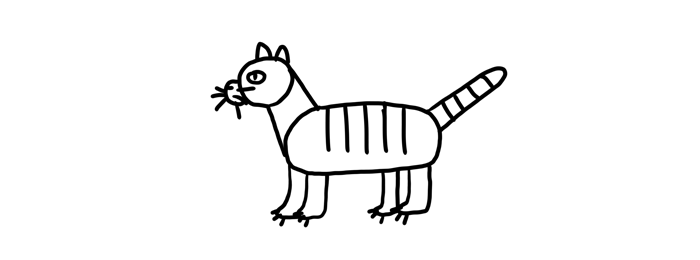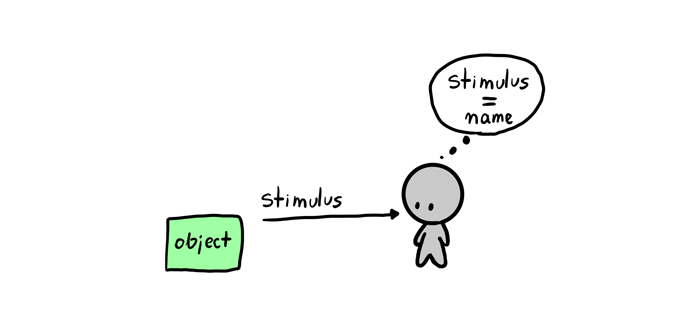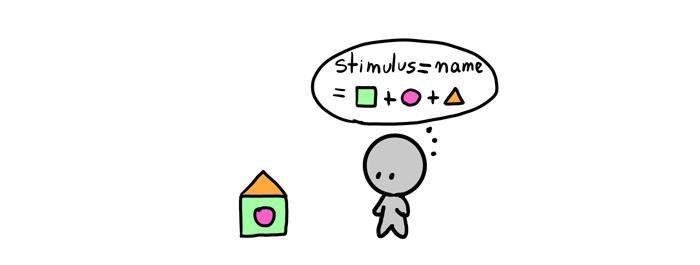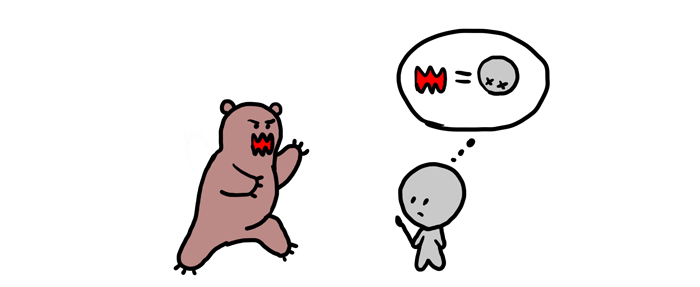This post has been originally commissioned for SketchBook Blog in 2016. After the site’s migration, the original is no longer available, but you can still access the content here. Enjoy!
I’ve always loved drawing animals, but I despised using references for a long time. I wanted to draw freely, without having to search for a photo similar to my vision every time. After all, I had a finished image in my head, so why not simply outline it on paper? So I did. And I ended up with something like this:

It was fine when I was a child. More than fine—I was being called talented! Time passed, and I grew older. But my “talent” didn’t seem to grow with me. I noticed the beautiful drawings of others and thought to myself, “I can imagine such a drawing, so I can do it, too!”
But it didn’t work like this. I envisioned a magnificent dragon in my head, with powerful wings, sharp claws, and a furious look in its eyes, and after putting it to paper it looked somehow like this:

Does this story ring a bell? If so, you’ll be glad to hear it has a happy ending. I discovered what my problem was. I discovered what made all these great artists so good. It wasn’t talent—it was practice. And not simply some practice, like drawing everyday waiting for progress to happen. A deliberate kind of practice. Today my dragons look like this, and I plan to be even better yet!

I have an analytical mind. I always want to know how things work, so I’ve analyzed my process of learning and found out the semi-skills building the big skill of drawing from imagination. These are the following:
- Precision: being able to draw intentionally from a reference
- Perspective: being able to draw simple forms in 3D from imagination
- Knowledge of the subject: being able to recall the features of an object to draw it realistically without a reference
In this series of articles I will be showing you the exercises and methods to grasp them all, so that you could finally draw what you see in your mind. First, we’ll be tackling precision—the basis of intentional drawing. It’s a kind of a “boring” skill, but because of this people often neglect it, going straight for the more exciting things, like drawing dragons. But you can’t draw a dragon if you can’t draw an intentional line.
Why Drawing From Imagination Is So Hard
It really seems to be the case—you can see the picture in your head, but when you draw the lines, they turn into a childish scribble. You know exactly what you want to draw, but you can’t draw it. As if your hand didn’t listen to what you tell it to do. However, there’s a deeper explanation for this phenomenon.
Did you hear that most people can’t draw a bicycle? This experiment reveals a very interesting fact about human psychology. We often think we know what something looks like, but we really don’t. Even if you ride your bicycle everyday to work, you may not know what it looks like. You are just able to recognize it.

The goal of evolution is not to create a perfect organism, just an optimal one. And our minds are optimal, too. We don’t need to remember every element of every thing we’ve ever seen. It would be a waste of memory. Knowing the exact proportion between a bear’s head and its paws will not help you survive its attack, neither will the exact knowledge of the bicycle’s mechanism help you ride it any more efficiently. The texture of the tree bark, the exact shape of the clouds, the rhythm of a healthy horse body—there’s no need to carry it all in memory, as long as you can simply recognize it.
Recognition Is Easy; Recall Is Hard
Recognition and recall are two very different things. Recognition is quick and simple: you see something, you get certain visual stimulus from seeing it, and you compare this stimulus to something you’ve felt before. Your brain tells you that this stimulus comes from something called “bicycle”.

But recalling a bicycle is a different thing. It’s an opposite process—you get a name, you recall the stimulus, and you try to recreate the elements that would awake this exact stimulus. You have these elements in your memory, somewhere, but they’re not organized—there was never a need to organize them because recognition is so much easier! Your only way to find the exact set of elements is to shoot in the dark and check what feels right.

When you have some word on the tip of your tongue, you recall strongly how that word feels; you just can’t recall the actual word, and you’ll recognize it immediately once you hear it (because it gives you the same feeling). This is when the difference between these two processes is the most visible. But you notice it in other situations, too—when your mom changes her haircut and you feel something’s different, but you can’t tell what haircut she had before, or when you’re in the dark about your best friend’s eye color.
Drawing can be learned. You just need to stop expecting the skill to come from within you eventually, if you only draw a lot. You can’t draw a look of something if you only remember its usability elements, no matter how clearly you can imagine the actual stimulus.
That feeling of knowing what something looks like comes from comparing a name/a concept to a stimulus. But a stimulus comes from seeing something, not the other way around. That’s where drawing comes to help. You can draw something and check if it gives you the stimulus you were looking for (as if you were saying some words aloud to find the one that’s on the tip of your tongue). Most likely, you will draw the most obvious elements, the ones you consciously know about. But this gives you only a part of the stimulus—just enough to recognize the thing. You are left with the feeling of wrongness.

Usability Is Just a Frame; Details Make the Drawing
When you look closer at such drawing, you’ll notice that it’s not the look that was recalled, but rather the elements of usability: you sit on the saddle, you hold the handlebars, you push the pedals, and the chain makes the wheels rotate. That’s a bicycle you know. And you turn those elements of usability into simple visual symbols: This thing is long, this thing is short, this one is round and that one is rectangular. This is simple enough to draw.

Let’s sum it up: when you imagine something you want to draw, in most cases what you have in your mind is not the actual image, but the feeling of seeing that image (you can test it by trying to describe it in detail with words only). You get a feeling that you can easily bring it to paper, but when you try, you get either a set of basic symbols (if it’s a real thing), or something horribly messy and unproportionate (if it’s something you’ve created in your mind). Neither fully fits the stimulus you were trying to feel.

What About Talent?
Now you don’t need to wonder anymore why drawing is so hard. But why are some people able to do it? Is this some kind of superpower? Yes, but it’s a superpower of every human brain.
Our brains are unbelievably plastic. This means they can get adapted to the environment and situations not foreseen by the genes. If you lose a part of the brain in an operation, the other part may take over some of its function. If you’re blind, you can learn basic echolocation, starting to see sounds as bats do. We can learn new complex skills all our lives, skills that evolution could never imagine for us. Like remembering the look of something and drawing it to awake a nearly complete feeling of looking at a real thing.

Talent is simply potential, a catalyst for learning a certain skill. A talented child learns faster and thus stays motivated for longer, keeping on drawing when other children give up. But you can’t be born with a skill of drawing—skill is something that must be learned. When you see a great artist drawing a beautiful horse from imagination, it doesn’t mean they were born with a talent of drawing a horse—there must have been dozens of failed horse drawings you’ll never be shown.

How to Learn Drawing
Drawing can be learned. You just need to stop expecting the skill to come from within you eventually, if you only draw a lot. You can’t draw a look of something if you only remember its usability elements, no matter how clearly you can imagine the actual stimulus. Yes, you know what a bicycle feels like. But you don’t know what it looks like if you’ve never paid attention to its look. And this is the actual solution to the whole problem — to start paying attention to the looks.
It’s not easy, because it’s not natural, and you’ll often notice your mind come against you. You’ll be looking at a vase of flowers, trying to see the shapes, shades, and colors, and it’ll be turned into symbolic lines you didn’t want, just because your brain tries to make it easier. It “thinks” that look doesn’t matter, that it’s only the meaning of it that counts. And in most cases it’s true, but not when you want to create a drawing!

The purpose of this lengthy introduction was to make you aware of the challenge. We can draw symbols just fine, drawing what we know and making other people understand it. But creating a simulation of looks of a real thing… that’s something we’re not prepared for. That’s why it’s so hard, and that’s why you must be really patient in your learning. You’re going against nature—it must take time.


1 Comment